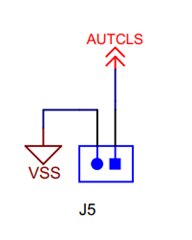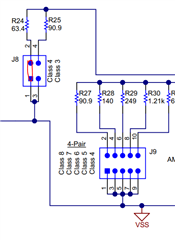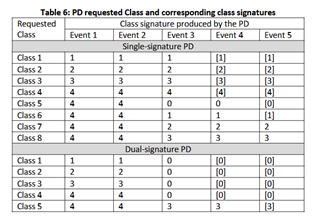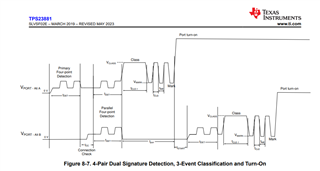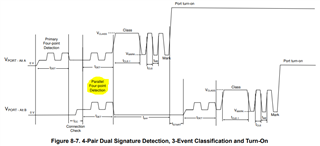Tool/software:
Hello,
I'm building a 802.3bt PoE PSE and I want to test it.
I see there is the eval board TPS2372-4EVM-006. It is possible to test my PSE with it?
I want to test:
- single and dual-signature.
- power limitation in using device classification.
- power demotion.
- autoclass.
Can I test my PSE board with TPS2372-4EVM-006?
How to test dual-signaure? ...I don't see a dual-signature mode in the eval board.
How to test autoclass? ... How can I do to configure the maximum power for the PD?
How to test power demotion?... how the PD know which class is selected by PSE?


